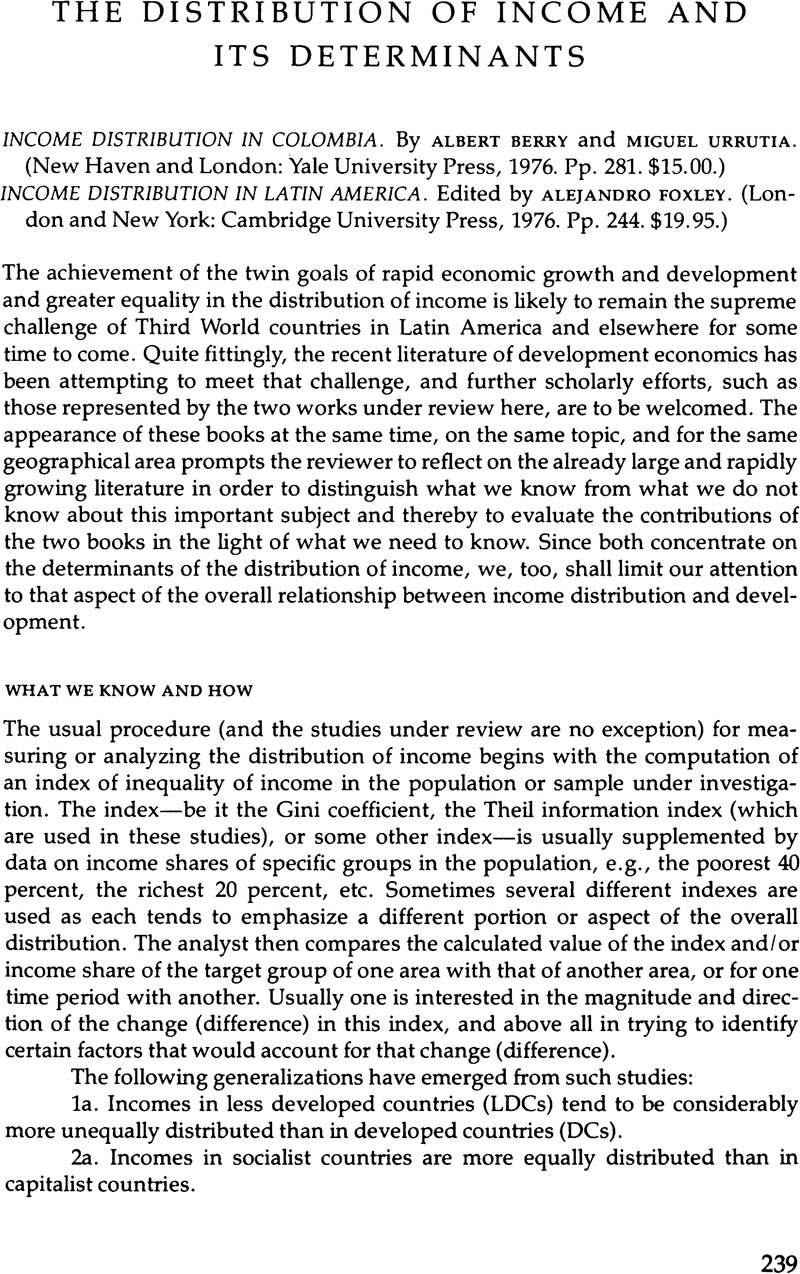No CrossRef data available.
Article contents
The Distribution of Income and its Determinants
Review products
Published online by Cambridge University Press: 24 October 2022
Abstract

- Type
- Books in Review
- Information
- Copyright
- Copyright © 1979 by the University of Texas Press
References
Notes
1. This is important because of contentions that the distribution of current (measured) income is considerably more unequal than that of permanent (lifetime) income. Since the former is dominated by random and generally uncontrolled events, it is claimed that there is nothing either surprising or undesirable about an unequal distribution of current income.
2. Compare, for example, the article by Irma Adelman, Cynthia Taft Morris, and Sherman Robinson (“Policies for Equitable Growth,” World Development 4, no. 7 [1976]:561–82) with the work by Hollis B. Chenery et al. (Redistribution with Growth [New York: Oxford University Press, 1973]). Some of the disagreements are no doubt attributable to the important role of initial conditions, as, for example, in the initial distributions of land, human capital, and physical capital.
3. See, however, Irma Adelman and Sherman Robinson, Income Distribution Policies in Developing Countries (Stanford, Calif.: Stanford University Press, 1977).
4. The model is also contradicted by some of their own findings, in particular (1) that the gap between urban and rural wage rates is large and growing and that it cannot be attributed to cost-of-living differences and (2) that the wage share in value added has increased in nonagriculture and decreased in agriculture, exactly the opposite of what would be expected from the labor surplus model.
5. See, for example, William R. Cline, “Distribution and Development: A Survey of Literature,” Journal of Development Economics 1, no. 4 (1975):359–400.
6. The authors of the individual papers are Richard Webb, Richard Weisskoff, Albert Fishlow, Carmelo Mesa-Lago and Roberto E. Hernandez, Anibal Pinto and Armando DeFilippo, Ricardo Ffrench-Davis, Alejandro Foxley and Oscar Muñoz, Adolfo Figueroa, Alejandro Foxley, Victor Tokman and Miguel Urrutia, and Clara Elsa de Sanduval.
7. The nine countries or territories of Latin America are: Argentina, Brazil, Chile, Colombia, Cuba, Mexico, Peru, Puerto Rico, and Venezuela.
8. Other, perhaps more interesting, examples are those of Adelman and Robinson and Samuel A. Morley and Jeffrey G. Williamson, “Class Pay Differentials, Wage Stretching, and Early Capitalist Development,” in M. Nash, ed., Essays in Economic Development and Cultural Change in Honor of Bert F. Hoselitz (Chicago: University of Chicago Press, 1977), pp. 407–27.


